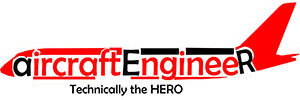The inspection procedure for heavy landing is laid on ATA chapter 05. Usually on 05-50-xxx unscheduled maintenance checks.
An aircraft may land overweight in an emergency. also known as heavy landing. The landing gear is designed to withstand landing at a particular weight and vertical decent velocity. If either one of these parameter is exceeded, it is probably that some primary or secondary damage
be found on the fuselage upper or lower skin. In all cases of suspected heavy landings, the flight crew should be consulted for details of aircraft weight, fuel distribution and landing conditions.
It is difficult to confine the possible damage to certain areas. The following areas are usually inspected for damage.
Landing Gear
- Examine tyres for excessive creep, flats, bulges, pressure, loss etc.,
- Check wheels, brakes, struts, axles and stays for damage, distortion and fluid leakage.
- Examine landing gear attachments and vicinity for damage distortion and movement of rivets, bolts etc.,
- Check shock struts for fluid leakage, normal extension and carry out nose-¬wheel tests as per approved maintenance manual.
- Examine the trunnion links, torsion links, truck beams, side struts and truck position mechanism.
Mainplanes
- Examine upper and lower surfaces for signs of wrinkling, pulled rivets, cracks and movement at joints.
- Check for fuel leakage from integral tanks.
- Check the operation of flying controls and lift augmentation devices.
- Check balance weights and mountings, wing spars for cracks and distortion.
Fuselage
- Check the fuselage skin and supporting structure for wrinkling, cracks and distortion.
- Check bulkheads for distortion and cracks.
- Check that the inertia switches for fire extinguishers, emergency lights have not tripped.
- Check security of passenger service panels and in particular that emergency oxygen systems have not been activated.
- Check pipes, tubes, service and instrument panels for damage.
- Check for fit of doors and condition of cargo restraint system.
- Check gyroscopic instruments for erection time, precession and unusual noises.
Engines
- Examine engine controls and rotating assemblies for full and free movement.
- Check engine mountings and cowlings for damage and cracks.
- Check oil system filters and leaks.
- Check propeller attachments and counterweight installations. Provided that no major structural distortion has been found, engine runs should be carried out in accordance with the relevant maintenance manual.
Tail Unit
Check flying controls, hinges and fairings for cracks and distortion.
this topic is covered in EASA part 66 module 7 maintenance practices.
